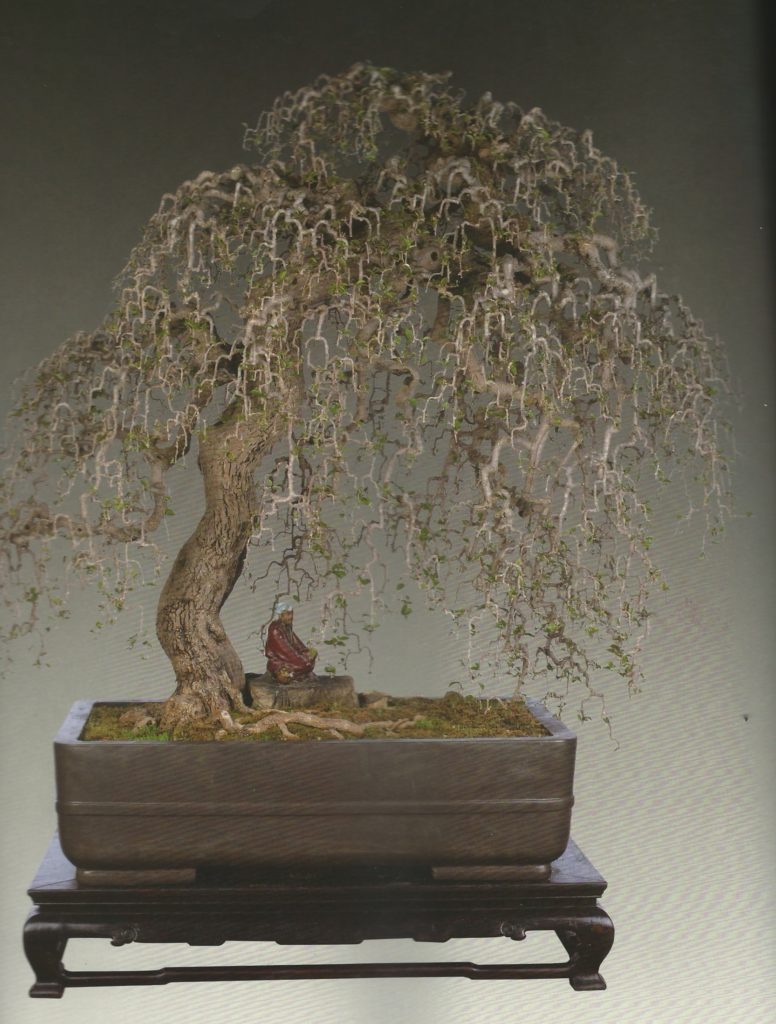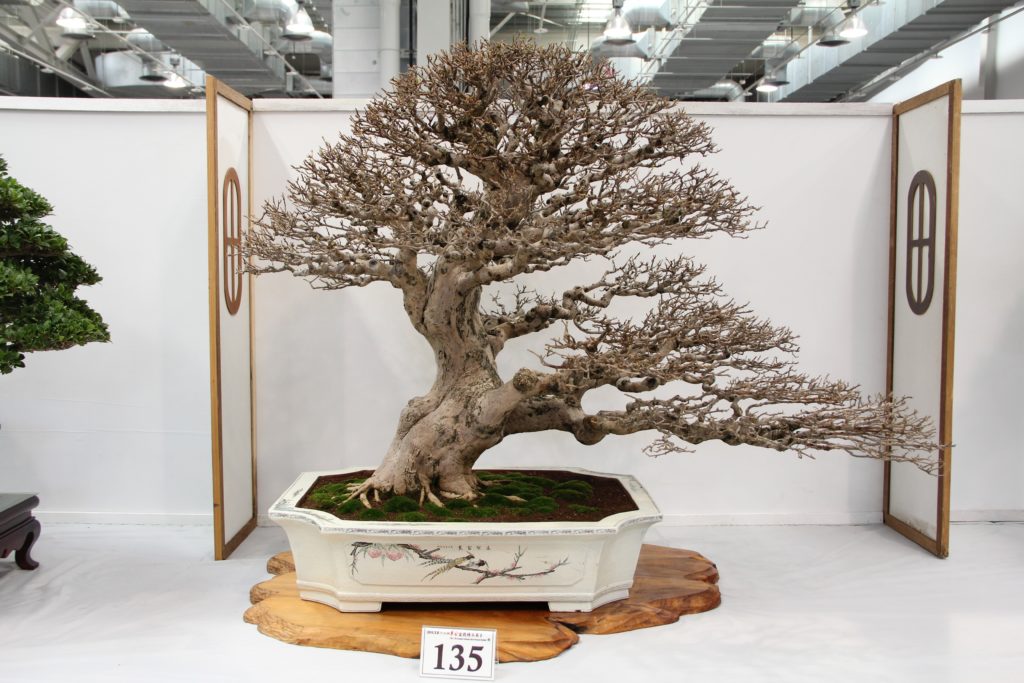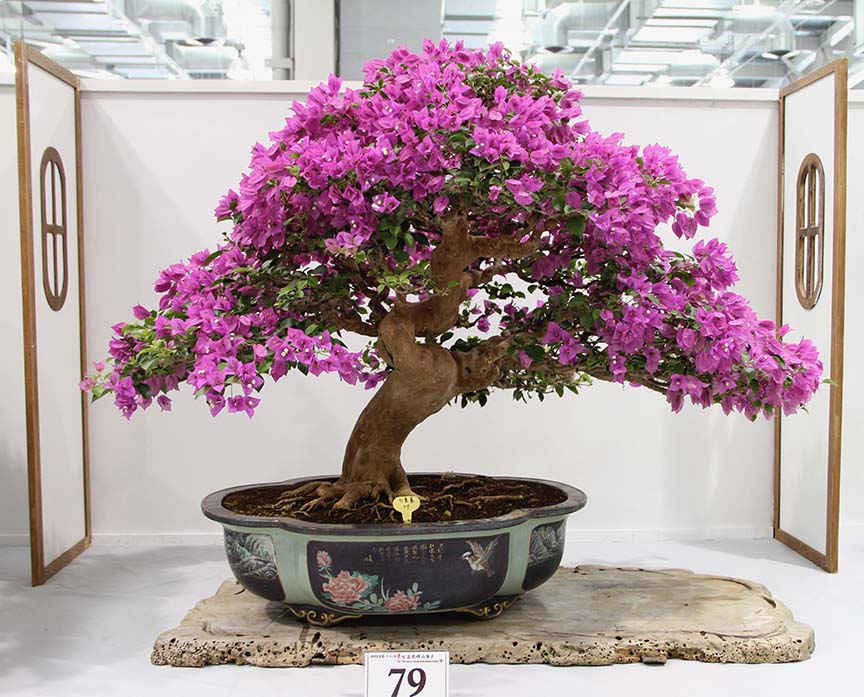

Jim Smith frequently advised “to make money in bonsai, sell bougainvillea bonsai.” That is because many people, especially the “unwashed” non-bonsai aficionados, have innate attraction to flowers and color. Bougainvillea, commonly called Paper Flower tree, satisfy that urge. (Note the flowers on a bougainvillea are the little white part in the middle of the colorful branch. The colorful red, purple, white or orange parts are leaves that have differentiated themselves from other green leaves. These colorful leaves are called bracts and accompany the inflorescence.) Therefore a common design goal for styling Paper Flower trees is to show off the flowers and colored bracts. Paper Flower trees are vines. To build a dense mass of flowers the branching within canopy and pads can get very leggy and messy.
In China and Taiwan, some growers set a different design goal. I have seen magnificent bougainvillea bonsai (or pensai the Chinese pronunciation for bonsai) that really don’t care about the colorful bracts or flowers. These trees are designed to show off the fine branching and structure – something many bougies in the USA are lacking due to different design goals. To develop this fine ramification, the growers use the clip and grow technique as if they were styling an elm or hackberry. They display the bonsai defoliated or with few leaves and no flowers.
Clip and grow technique entails letting a branch elongate and thicken and then trimming it back to a short stub. It is an effective technique but it takes time, especially for a bougainvillea as it is a vine. The shoots are naturally long and thin. It takes years to develop the taper in the bougainvillea branches. It also limits the flowering as the flowers like to grow at the end of long shoots.
Bougies are not native to southeast Asia – they are relatively new additions to the flora of the region (probably imported by Count de Bougainville’s circumnavigation campaign. He was the 14th navigator, and the first Frenchman, to sail around the world – but that’s a story for another time.) What is interesting is how the Chinese and Taiwanese have developed the specimens with fat trunks, taper and no evidence of deadwood rot.

The lack of rot from major cuts was perhaps the most interesting aspect I noticed of these large bonsai. The reasons for this definitely deserve further study. Upon pondering the situation, I now keep my bougainvillea bonsai away from my overhead sprinkler system. I only water the soil. The rain does make the scars wet but hopefully the rain only will slow down the rot giving time for the cuts to heal. We shall see.
Please enjoy the following photos of some incredible bougainvillea pensai.





As seen above, in Taiwan there are also bougies shown with lots of flowers. When styling a bougainvillea keep the two design goals as options. The solution might be to have some bougies where a few have been designed to show flowers and a few have great structure. And maybe in unicorn land you can make one that has both.
